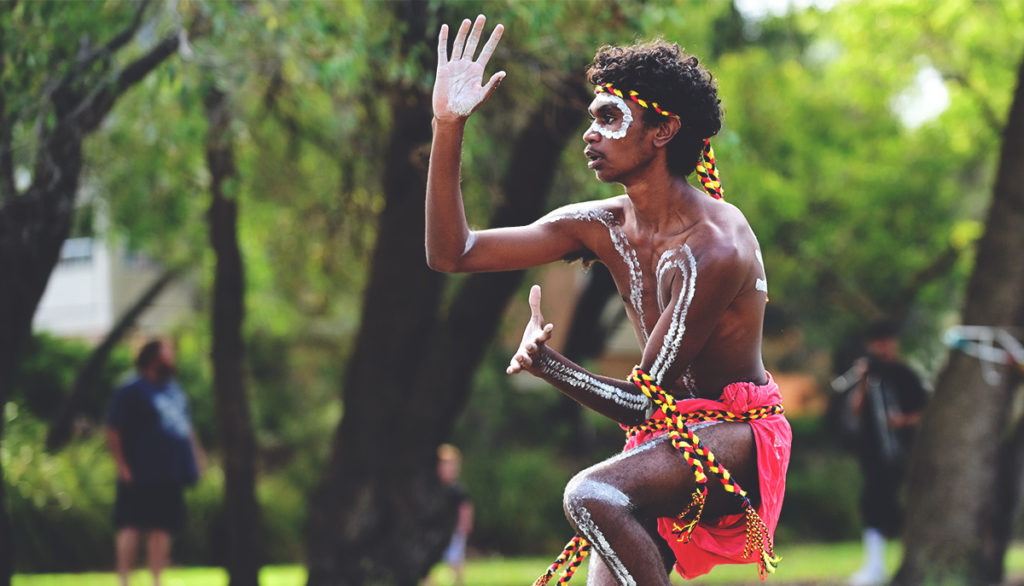If you’ve ever attended an Australia Day event or celebration on 26 January, you’ve probably heard one particular song being played – the Australian national anthem. On the surface, it may seem like an uplifting tune, but there’s more to the anthem’s lyrics than meets the eye.
What is the Australian national anthem?
The current national anthem is ‘Advance Australia Fair’ – but this hasn’t always been the case. Prior to 1984, the anthem was ‘God Save the Queen’ (or ‘God Save the King’, depending on the monarch!), which is also the anthem of the United Kingdom. ‘God Save the Queen’ is still used as the royal anthem for nations that were once part of the British Empire, which collectively are referred to as the Commonwealth of Nations and includes countries like Australia, New Zealand and Canada.
‘Advance Australia Fair’ was composed by Peter Dodds McCormick, who arrived in Australia from Scotland and later became a school teacher in New South Wales. He wrote the original version of the tune in 1878, and it quickly gained popularity for its patriotic tone. It wasn’t for another century, however, that the Australian government would temporarily make ‘Advance Australia Fair’ the national anthem in 1974, before ‘God Save the Queen’ was again reinstated two years later. A modified version of ‘Advance Australia Fair’ finally replaced ‘God Save the Queen’ as the national anthem in 1984.
The Australian national anthem being sung in the Dharug language.
When is the Australian national anthem sung?
The national anthem is sung on many occasions during the year, including Australia Day, ANZAC Day, and the grand finals of both the AFL and the NRL, as well as at school assemblies and awards ceremonies like the Olympics. It is customary for everyone to stand as the anthem is sung. When the Queen or a member of the Royal Family is present, however, the royal anthem, ‘God Save the Queen’, is performed instead.
How has the Australian national anthem changed?
For the last 37 years, there have been no changes to the wording of the anthem – until this year. To better recognise the long history of Australia’s First Nations stretching back for tens of thousands of years, the second line of the anthem has been altered from ‘For we are young and free’ to ‘For we are one and free’.
Some Australians have welcomed the change and say it represents an important step forward. Believing the nation to be ‘young’ suggests that the country was ‘discovered’ two hundred years ago with the arrival of the First Fleet when in reality, Indigenous Australians have lived here for over sixty thousand years. “Symbolism is important, real action and change is important,” said First Nations Foundation Chairman and Yorta Yorta man Ian Hamm in an interview with ABC News. “[But] if you do one or the other, you only get half the job done.” Many believe changing only one word is not enough, and that we should do more to recognise Indigenous Australians cultures and the fact that sovereignty of the land was never ceded.
Could the national anthem change again in the future?
Many First Nations peoples consider Australia Day to be a day of mourning that signifies the beginning of British invasion, colonisation and land theft. Some see the current national anthem as uninspiring, outdated and difficult to understand. At rugby league games, some players have refused to stand as a sign of protest when the anthem is played. And every year on 26 January there are demonstrations in capital cities calling for the date of Australia Day to be changed or the anthem to be replaced by a more popular, and less controversial, alternative, such as ‘Waltzing Matilda’.
The national anthem has been updated before on multiple occasions, so there is a precedent for change. The lyrics have even been rewritten in the Dharug language, spoken by the Dharawal people, and sung at rugby league and rugby league matches. And in the broader community, advocates push for an Indigenous voice to be enshrined in the Australian constitution, the nation’s founding piece of law which currently does not acknowledge the existence of First Nations peoples.
As Australia Day approaches and the anthem is sung at citizenship ceremonies and public events, you may be wondering about the meaning behind the words. Remaining conscious of the history of our national institutions, and learning about the impact of British colonialism on Indigenous Australians, can help you make a more informed decision about your involvement in Australia Day celebrations, and recognise the importance of listening to Indigenous voices and calling for change.





